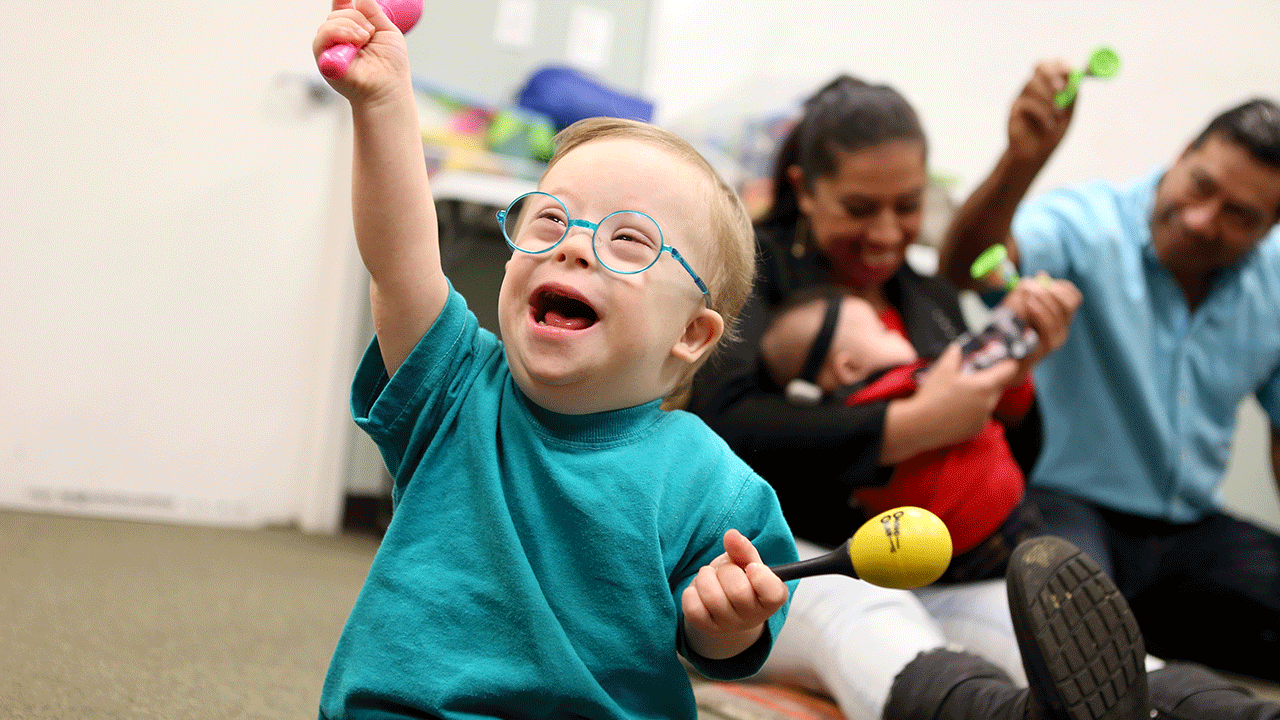Down Syndrome Awareness Month takes place annually in October. Raising awareness and supporting those with Down syndrome is important every month of the year, but October is a time to put extra effort into building knowledge and increasing awareness.
There are over 400,000 people in the United States who live with Down syndrome.
The life expectancy of those with the disease has increased dramatically over the years. In 1983, the average life expectancy of someone with Down syndrome was age 25, but it is now 60, according to the Global Down Syndrome Foundation.
3 KEY LESSONS MY SISTER WITH DOWN SYNDROME TAUGHT ME ABOUT LIFE
Below is everything you need to know about Down syndrome and how you can help spread awareness about it.
- What is Down syndrome?
- What are symptoms of Down syndrome?
- Why is National Down Syndrome Awareness Month important?
- What ribbon represents Down syndrome?
- How do you observe Down Syndrome Awareness Month?
1. What is Down syndrome?
Down syndrome is a condition in which a baby is born with an extra chromosome.
Chromosomes determine how the body forms and functions. Those born with an extra chromosome experience changes in the way that the body and brain develop.
A baby is typically born with 46 chromosomes. A baby with Down syndrome has a full or partial copy of chromosome 21. The most common type of Down syndrome is trisomy 21. This type of Down syndrome accounts for 95% of all cases.
Less common types of Down syndrome are translocation and mosaicism.
NANNY AND 5-YEAR-OLD WITH DOWN SYNDROME SAY DAILY AFFIRMATIONS TOGETHER-‘SO EMOTIONAL’
There are no known ways to prevent down syndrome during pregnancy, and there are no known root causes of the condition.
One risk factor associated with Down syndrome is the age of the mother. The odds of delivering a baby with Down syndrome increase with age. For example, the odds of a baby being born with Down syndrome in a pregnant woman who is 25 are about 1 in 1,250. At age 40, the odds are about 1 in 100.
2. What are symptoms of Down syndrome?
There are both physical and developmental symptoms of Down syndrome. Physical symptoms include a flattened face; shorter height; short neck; small ears, hands and feet; and decreased muscle tone.
Developmental symptoms in a child with Down syndrome are a short attention span, impulsive behavior, slow learning and delayed speech development.
While these are all common symptoms, not every child with Down syndrome will display each one of these traits.
3. Why is National Down Syndrome Awareness Month important?
National Down Syndrome Awareness Month is important because “it’s a month to raise awareness and celebrate the many abilities of our loved ones with Down syndrome,” according to the National Down Syndrome Society, which created the awareness month in the 1980s.
“Down syndrome is one of the most common types of intellectual disabilities. So, it’s no surprise that each year in October we recognize Down Syndrome Awareness Month to raise public awareness about the condition and advocate for acceptance and inclusion of people with Down syndrome,” the Special Olympics website states.
“People with Down syndrome still face stereotypes and myths, but they’ve shown time and again that the condition is just one part of who they are and doesn’t define them or limit their abilities. That’s why it’s so important that during Down Syndrome Awareness Month and all year long, we help spread the message of love, acceptance, inclusion and respect.”
4. What ribbon represents Down syndrome?
The Down syndrome awareness ribbon is blue and yellow. You can wear a blue and yellow ribbon throughout the month to spread awareness.
You can also choose days to wear blue and yellow clothing to spread the word and support those with Down syndrome throughout the month.
5. How do you observe Down Syndrome Awareness Month?
Educating yourself and others about Down syndrome is one way to honor the occasion throughout the month. You can educate yourself through reading books and articles and watching documentaries.
You can take your knowledge and spread awareness to others by sharing information on social media.
Through the month of October, there are plenty of events, fundraisers and walks around the country dedicated to Down syndrome awareness. You can also choose to set up a fundraiser of your own or support a local business founded by or inspired by individuals with Down syndrome.
There are also many volunteer opportunities to take advantage of during this time. A couple of organizations to explore volunteering for are GiGi’s Playhouse and Special Olympics.
Read the full article here

